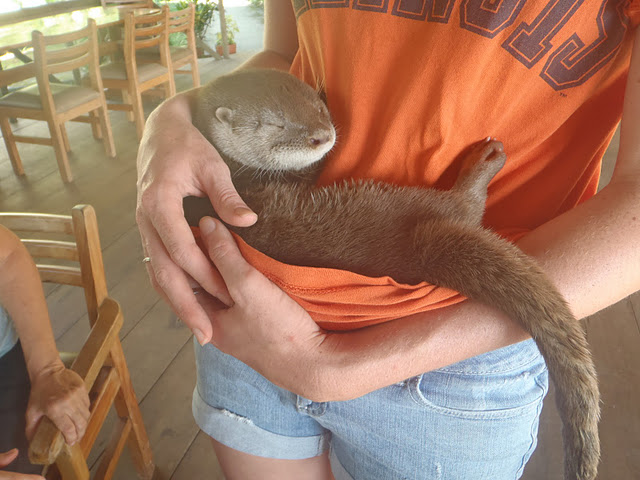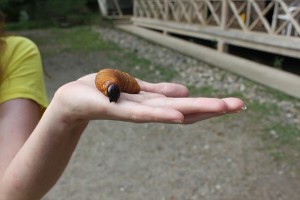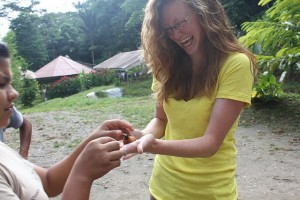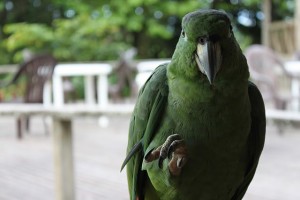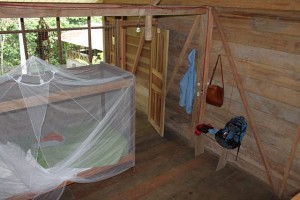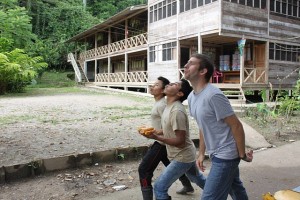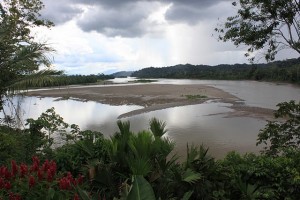…. I seem to get this question a lot. Don’t tell anyone, but even though I’ve already been here in Ecuador for a few days, I still don’t really know the complete answer. I would imagine that if you placed all the people to whom I’ve given some sort of answer in a room together, you’d probably think I have multiple personalities. Given the many stakeholders, deliverables, and project tasks that have been tossed up over the past few months, the possibilities for what I’ll actually accomplish are endless (and quite frankly, a little overwhelming).
Therefore – to clear it all up for you guys and myself, I’m going to use this space for some good old fashioned project organization. I was inspired last week by little sister’s first week in high school Chemistry where they learned how to write up a proper lab experiment. And since my project here is quite experimental in itself.. I think that’s precisely the format I’ll use to relay to you, my loving public, and to myself what the heck I’m doing down here. So here ‘goes..
Background: One of the greatest things to come out of the development/NGO/social enterprise/foreign aid/do-gooder space in the past 10 years (in my opinion) is impact investment. What is impact investment you ask? As one of my classmates used to say, that’s a GREAT question. In my own words, impact investment is the flow of capital (cash) from a social investor to a social entrepreneur with the intention that this injection of capital allow the entrepreneur’s enterprise to scale and grow not only in revenue, but also in social impact. If this defintion doesn’t do it for you, check out this, and this . Oh and this too!
Now some of you critical thinkers out there might be wondering what I mean by “social.” And my response is – what does it mean to you? For some investors, social impact may come in the form of clean energy, last-mile power distribution, or employment. For others, it could mean access to healthcare, affordable basic goods and services, or education. For instance, First Light Ventures aims to invest in companies that provide affordable basic goods and services to impoverished individuals.
So far, impact investment has made wonderful headway in the United States. And while we in the US definitely have our own social problems, there are BILLIONS of people in the world living below the poverty line, many of whom live in emerging markets. Foreign aid efforts have been proven inefficient, and microfinance for the most part is geared toward individuals. Impact investment allows social entrepreneurs who would otherwise be overlooked by traditional investors the chance to play in the venture capital space and prove that not only can they sustain a profitable business, but also one that benefits society as a whole. This leads us to the main reason for me being here….
Problem: Well, there are a lot of those out there. I’ve settled on one that is pretty all-encompassing, and we’ll go ahead and call it a challenge. Problem is such a weird word…
1) How can impact investors most effectively and efficiently channel much needed capital to social entrepreneurs in emerging markets? And more specifically, in the rural Amazon of Ecuador?
Hypothesis: The Village Capital (VilCap) business accelerator model (more on this in a later post!) will help to harness social innovation and entrepreneurs in the Amazon region of Ecuador, and thus further promote social and ecnomic development in the region.
Methodology: Well, here I am in Ecuador so the first hurdle has been conquered. One of the biggest challenges for impact investors is actually getting to countries such as Brazil, Lebanon , Egypt or Ecuador. Not to mention, language and cultural barriers are abound in these locals, making it difficult to work effectively in a limited time contraint. Lucky for me, hablo español, I am familiar with latin culture from previous travel and educational experiences, and the kind folks at the Yachana Foundation have agreed to host me for next 5 months in exchange for some entrepreneurship training at their high school.
So, in order to tackle this challenge I’ve been tasked to perform feasibility study, or estudio de factibilidad, on whether or not a business accelerator or some other type of medium for impact investors and social entrepreneurs to gather is possible in the Amazon region of Ecuador. And since this blog post is quickly turning into a novel… I’ll wrap it up by saying that over the next 5 months I’ll be visiting various micro enterprises and social businesses in the Amazon, venturing to existing business incubators in Ecuador to see how they run their ships, working closely with the entrepreneurship program at Yachana, and talking to anyone and everyone who will listen to my ideas 🙂
Until next time, sending you all lots of latin love 🙂

